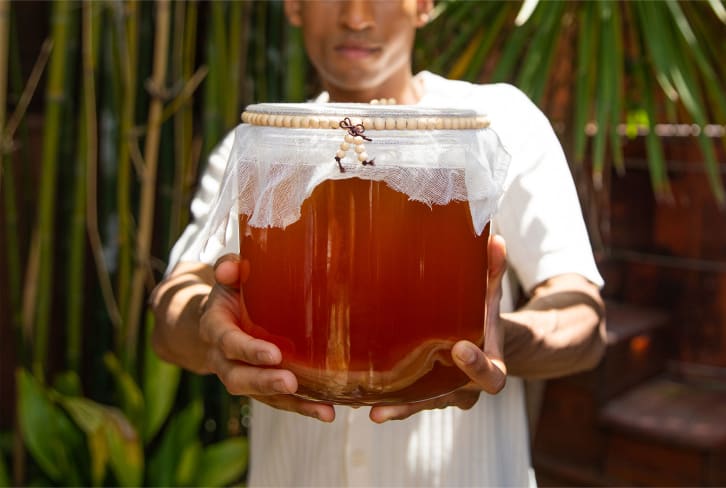Advertisement
A Simplified Guide To Sulfites In Wine + What To Look For On A Label


Although lots of things are added to conventional wine, it seems to be sulfites that garner the most attention in the world of wine. Sulfites are compounds that occur naturally in some foods and are also used as a preservative. When added to wine, they will stabilize and preserve it, preventing a wine from becoming oxidized.
Sulfites will occur naturally in wine via the fermentation process but typically in scant amounts. The majority of sulfites in wine is added by the winemaker, when the wine is being bottled—referred to as "at bottling." Sulfites can come in the form of sulfur dioxide, which is why you may hear these terms used interchangeably.
The general consensus for a natural wine is that it should have little to no sulfites added at bottling. The substance is not only mildly allergenic for some, but it can strip wine of its characteristics.
However, there are big risks in avoiding added sulfur—wines can re-ferment in the bottle, for instance. Pulling off a beautiful, expressive wine with zero sulfur takes serious skill. Importer Tess Bryant of Tess Bryant Selections believes that "once sulfites are added to wine, aromatics and flavor are altered and the wine is fundamentally changed. For me, it is not so much the taste of sulfur and the presence of it: It masks some of the true identity of the wine."
There is a seemingly near-constant debate about how many sulfites can be added to a wine and have it still be deemed natural, and the debate doesn't appear to be coming to a conclusive end anytime soon.
In most countries, any bottle of wine that contains more than 10 parts per million (ppm) is required to have a declaration on the label. Below is a breakdown on what amount of sulfites you can expect in various approaches to winemaking:
Conventional Wine
Permitted to contain up to 300 ppm of sulfites; however, totals are never listed on a wine bottle. Because of this, I avoid conventional wines in general, knowing that some can have such excessive amounts.
Certified Organic Wine
In the United States, Certified Organic Wine may have no added sulfites (but naturally occurring sulfites are fine).
Organically Grown Grapes
In the United States, wine made with organically grown grapes may have up to 100 ppm of sulfites. You'll see "Made with Organically Grown Grapes" on these wine labels. While there is no current regulation on this, 100 ppm of sulfites far exceeds what the wine community deems natural.
Natural Wine
Most agree that zero added sulfites is ideal, with a lot of natural winemakers having totals around 25 ppm. Bryant feels that "Natural wine actually does have a definition: wine from organic (or better) grapes produced with no additions or subtractions."
Watch Next
Enjoy some of our favorite clips from classes
Enjoy some of our favorite clips from classes
What Is Meditation?
Mindfulness/Spirituality | Light Watkins
Box Breathing
Mindfulness/Spirituality | Gwen Dittmar
What Breathwork Can Address
Mindfulness/Spirituality | Gwen Dittmar
The 8 Limbs of Yoga - What is Asana?
Yoga | Caley Alyssa
Two Standing Postures to Open Up Tight Hips
Yoga | Caley Alyssa
How Plants Can Optimize Athletic Performance
Nutrition | Rich Roll
What to Eat Before a Workout
Nutrition | Rich Roll
How Ayurveda Helps Us Navigate Modern Life
Nutrition | Sahara Rose
Messages About Love & Relationships
Love & Relationships | Esther Perel
Love Languages
Love & Relationships | Esther Perel
What Is Meditation?
Box Breathing
What Breathwork Can Address
The 8 Limbs of Yoga - What is Asana?
Two Standing Postures to Open Up Tight Hips
How Plants Can Optimize Athletic Performance
What to Eat Before a Workout
How Ayurveda Helps Us Navigate Modern Life
Messages About Love & Relationships
Love Languages
Advertisement

How To Use Food To Recover From Autoimmunity: An MD's Top 4 Tips
Sara Szal Gottfried, M.D.










